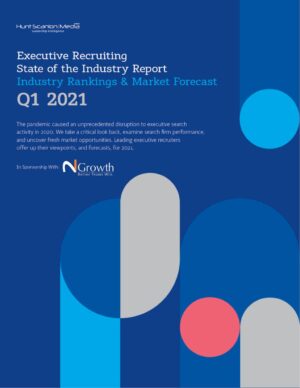Jobless Claims Reach Pandemic Low, But New Problems Emerge

November 4, 2021 – The Labor Department reported that 269,000 Americans have filed new claims for state unemployment benefits, a decrease of 14,000. This is the lowest level for initial claims since March 14, 2020 when it was 256,000.
The previous week’s level was revised up by 2,000 from 281,000 to 283,000. The four-week moving average was 284,750, a decrease of 15,000 from the previous week’s revised average. This is the lowest level for this average since March 14, 2020 when it was 225,500. The previous week’s average was revised up by 500 from 299,250 to 299,750.
Other data on the labor market has also been moving in an improving direction recently. On Wednesday, ADP reported that private employers added back 571,000 payrolls in October, or the most since June. And Friday’s government-issued jobs report from the Labor Department is expected to show a pick-up in hiring, with 450,000 positions expected to have come back after a disappointing 194,000 in September.
 Executive Recruiters & Talent Leaders
Executive Recruiters & Talent Leaders
Reveal Market Forecast
The pandemic caused an unprecedented disruption to executive search activity in 2020. Executive recruiters spent the better part of last year resetting expectations in the midst of an unprecedented interruption to their business. But according to recruiting industry leaders interviewed for this report, the search business is turning a significant corner.
We take a critical look back, examine search firm performance, and uncover fresh market opportunities. Leading executive recruiters offer up their viewpoints, and forecasts, for 2021. The good news: optimism reigns. And that means we could be in for one of the biggest growth spurts the executive search sector has enjoyed in years. Here’s our latest thinking. A special thanks to our co-sponsor: N2Growth! Buy your copy today!
“We’re still some ways away from full employment. We should not believe that the current environment is actually the new normal,” Gregory Daco, Oxford Economics chief U.S. economist, told Yahoo Finance. “We went through a summer lull, where there was a rise in Delta infections, which led to renewed virus fear and renewed care for sick people. We know that was a big constraint on labor supply.”
“We continue to see numerous supply constraints, both on the capital and on the labor front. And we expect that as we move towards the end of the year, we are going to see an improving health situation, as well as an improvement on the supply side that should help release some of the labor supply and help generate stronger employment growth.”
Layoffs
Nearly 5,100 workers were laid off in October because they refused to comply with an employer’s requirement to get vaccinated against COVID-19, according to Challenger, Gray & Christmas. That compares with 5,800 who lost their jobs because of businesses closing.

“We know companies are holding tight to their workers and are in fact looking for workers,” said Andrew Challenger, senior vice president with the outplacement firm. “However, we also know that for many employers, a federal vaccine mandate from OSHA is forthcoming, and for many government employees and contractors, as well as for healthcare providers, mandates already exist.”
During the week, 42 states reported 277,109 continued weekly claims for Pandemic Unemployment Assistance benefits and 45 states reported 233,684 continued claims for Pandemic Emergency Unemployment Compensation benefits. The highest insured unemployment rates were in Puerto Rico (4.2), California (2.9), Hawaii (2.8), Illinois (2.8), New Jersey (2.5), the Virgin Islands (2.5), Alaska (2.4), District of Columbia (2.3), Nevada (2.3), and Pennsylvania (2.0). The largest increases in initial claims were in District of Columbia (+3,875), Kentucky (+2,940), Missouri (+2,048), Florida (+1,307), and Oklahoma (+1,256), while the largest decreases were in California (-13,138), Georgia (-4,107), Michigan (-2,505), Pennsylvania (-1,245), and Tennessee (-794).
Related: Major Paradigm Shifts Coming Out of the Coronavirus Crisis
Contributed by Scott A. Scanlon, Editor-in-Chief; Dale M. Zupsansky, Managing Editor; and Stephen Sawicki, Managing Editor – Hunt Scanlon Media











